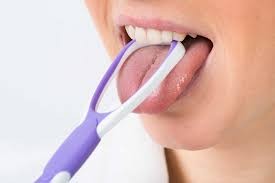When we think about oral hygiene, our focus usually goes straight to teeth and gums. But there’s another important part of your mouth that often gets overlooked—the tongue. Believe it or not, this muscular organ can reveal a lot about your oral and overall health.
Your tongue is not just for tasting food or helping you speak—it’s also a mirror that can reflect symptoms of oral hygiene issues, infections, deficiencies, and even systemic diseases.
In this blog, we’ll break down what different colors, textures, and changes in your tongue might mean—and what your dentist wants you to know.
Anatomy 101: What’s Normal?
A healthy tongue should be:
- Pink in color
- Slightly moist
- Covered with tiny nodules called papillae
- Smooth in motion—not swollen or overly bumpy
Anything outside this could be a sign that something’s off—and it’s worth discussing with your dental or medical provider.
Common Tongue Conditions & What They Mean
- White Coating or Patches
- Possible Causes: Oral thrush (fungal infection), poor tongue hygiene, dehydration
- What to Do: Gently brush your tongue daily. If the coating doesn’t go away, see your dentist—it may need antifungal treatment.
- Bright Red or Strawberry Tongue
- Possible Causes: Vitamin B12 deficiency, Kawasaki disease (in kids), scarlet fever
- What to Do: This could signal nutritional issues—time for a blood test and dietary evaluation.
- Geographic Tongue (Map-Like Patches)
- Appearance: Smooth, red areas with slightly raised borders
- Is It Harmful? No. It’s benign and often hereditary. Sometimes causes mild sensitivity to spicy or acidic foods.
- Fissured or Cracked Tongue
- Description: Grooves or cracks along the surface
- Cause: Often normal aging or genetics; sometimes linked to dry mouth or vitamin deficiencies
- Tip: Keep your tongue clean—food can get trapped in deep fissures.
- Black Hairy Tongue
- Appearance: Dark discoloration with hair-like projections
- Cause: Bacterial overgrowth, poor oral hygiene, smoking, antibiotics
- Solution: Regular tongue brushing and lifestyle changes can help.
- Sore or Burning Tongue
- Causes: Nutritional deficiencies (iron, B12), hormonal changes, allergies, or burning mouth syndrome
- Advice: If pain persists, don’t ignore it. Your dentist or doctor can rule out more serious causes.
Bad Breath? Your Tongue Could Be the Culprit
Up to 90% of bad breath cases originate in the mouth—and a coated or bacteria-laden tongue is often to blame. The back of the tongue can trap food debris, dead cells, and bacteria that produce volatile sulfur compounds (the stinky stuff).
Tip: Use a tongue scraper or soft toothbrush daily to clean your tongue—especially the rear portion.
How to Clean Your Tongue Properly
- Use a tongue scraper (metal or plastic) OR the tongue-cleaning side of your toothbrush.
- Scrape from back to front, gently but firmly.
- Rinse your mouth afterward.
- Clean your tongue once or twice a day—just like your teeth.
Don’t press too hard or use rough tools—it can cause injury or irritation.
When to See a Dentist
See your dentist or physician if you notice:
- Persistent white or red patches
- Pain, ulcers, or sores that don’t heal within 10–14 days
- Difficulty moving your tongue
- Sudden changes in size, color, or coating
- Burning or metallic taste without explanation
Early signs of oral cancer, infections, or systemic diseases can often be caught through a tongue exam.
What We Offer at Oral Medics Dental Clinic
At Oral Medics Dental Clinic, we don’t just look at your teeth—we perform a comprehensive oral exam, including:
- Tongue and soft tissue screening
- Oral cancer checks
- Advice on tongue hygiene
- Treatment for halitosis, ulcers, and tongue-related conditions
Your tongue can be the key to catching health issues early. Let us help you keep it—and the rest of your mouth—healthy.

